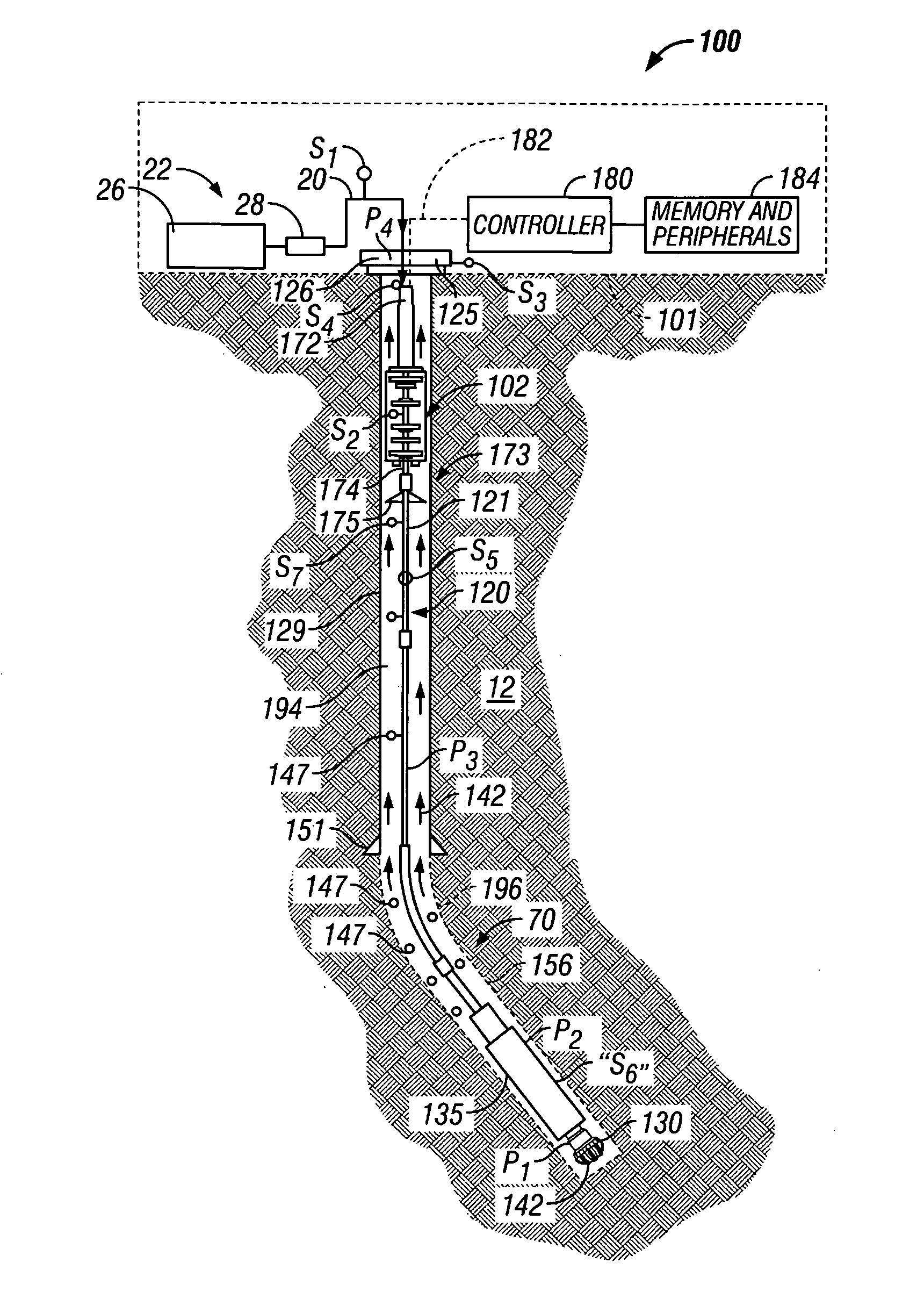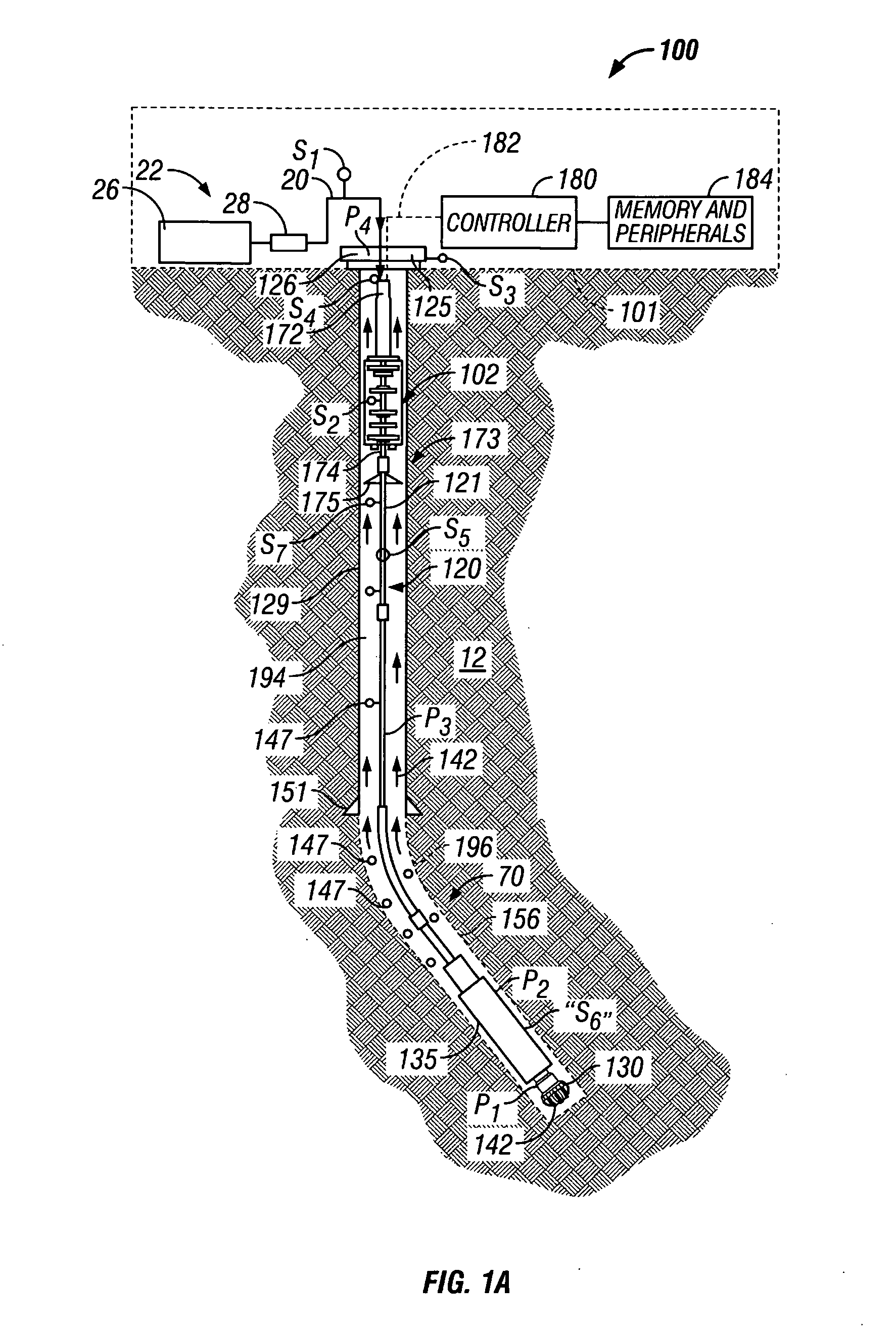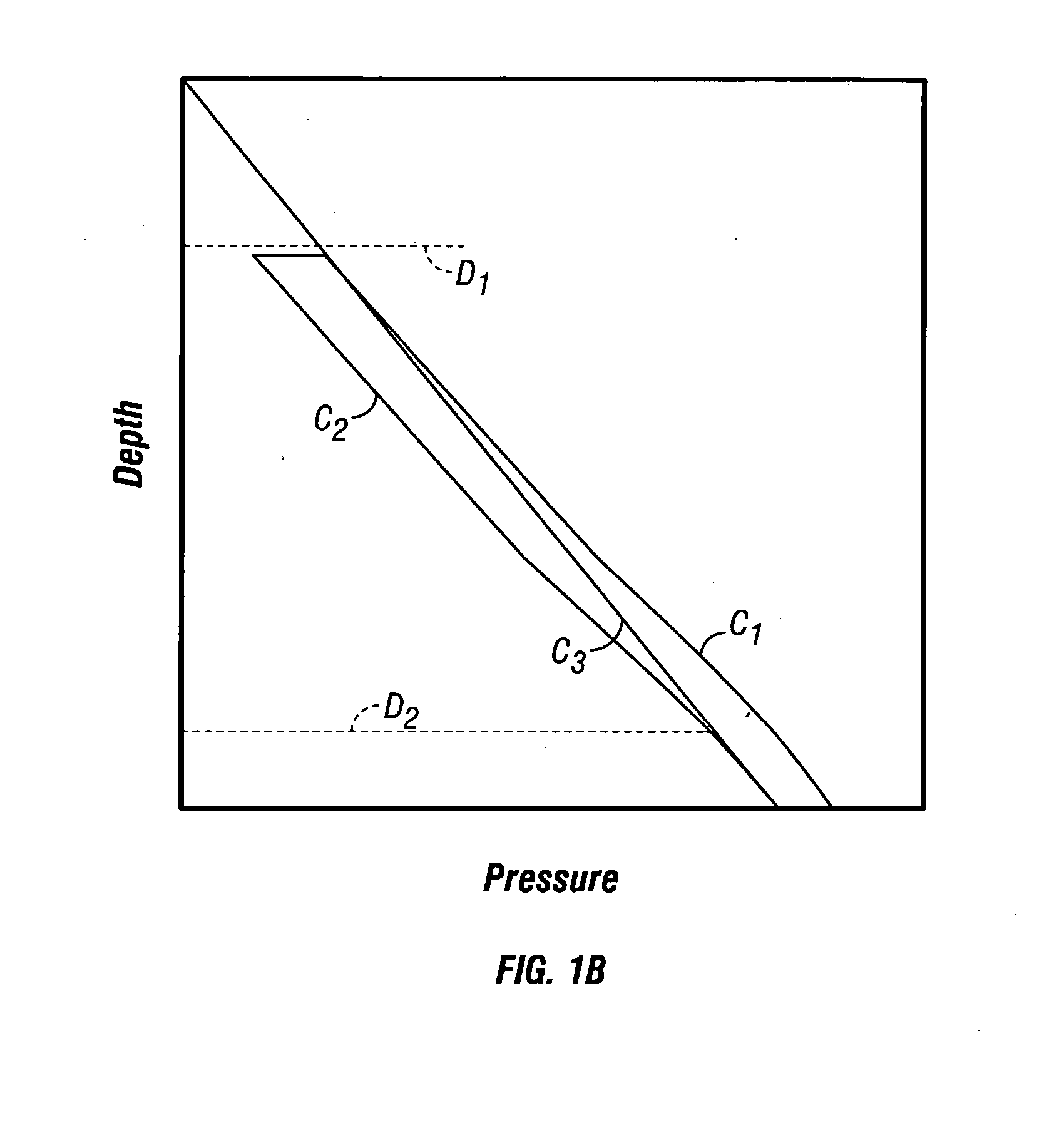Active buttonhole pressure control with liner drilling and completion systems
a technology of pressure control and buttonhole, which is applied in the direction of drilling pipes, drilling rods, borehole/well accessories, etc., can solve the problems of increasing the pressure which can fracture the formation, affecting the cleaning effect of the hole, so as to improve the wellbore pressure management, reduce or eliminate the effect of dynamic pressure loss and reducing dynamic pressure loss
- Summary
- Abstract
- Description
- Claims
- Application Information
AI Technical Summary
Benefits of technology
Problems solved by technology
Method used
Image
Examples
Embodiment Construction
[0032] Referring initially to FIG. 1A, there is schematically illustrated a system for performing one or more operations related to the construction, logging, completion or work-over of a hydrocarbon producing well. In particular, FIG. 1A shows a schematic elevation view of one embodiment of a wellbore drilling system 100 for drilling wellbore 90 using conventional drilling fluid circulation. The drilling system 100 is a rig for land wells and includes a drilling platform 101, which may be a drill ship or another suitable surface workstation such as a floating platform or a semi-submersible for offshore wells. For offshore operations, additional known equipment such as a riser and subsea wellhead will typically be used. To drill a wellbore 90, well control equipment 125 (also referred to as the wellhead equipment) is placed above the wellbore 90. The wellhead equipment 125 includes a blow-out-preventer stack 126 and a lubricator (not shown) with its associated flow control.
[0033] T...
PUM
 Login to View More
Login to View More Abstract
Description
Claims
Application Information
 Login to View More
Login to View More - R&D
- Intellectual Property
- Life Sciences
- Materials
- Tech Scout
- Unparalleled Data Quality
- Higher Quality Content
- 60% Fewer Hallucinations
Browse by: Latest US Patents, China's latest patents, Technical Efficacy Thesaurus, Application Domain, Technology Topic, Popular Technical Reports.
© 2025 PatSnap. All rights reserved.Legal|Privacy policy|Modern Slavery Act Transparency Statement|Sitemap|About US| Contact US: help@patsnap.com



